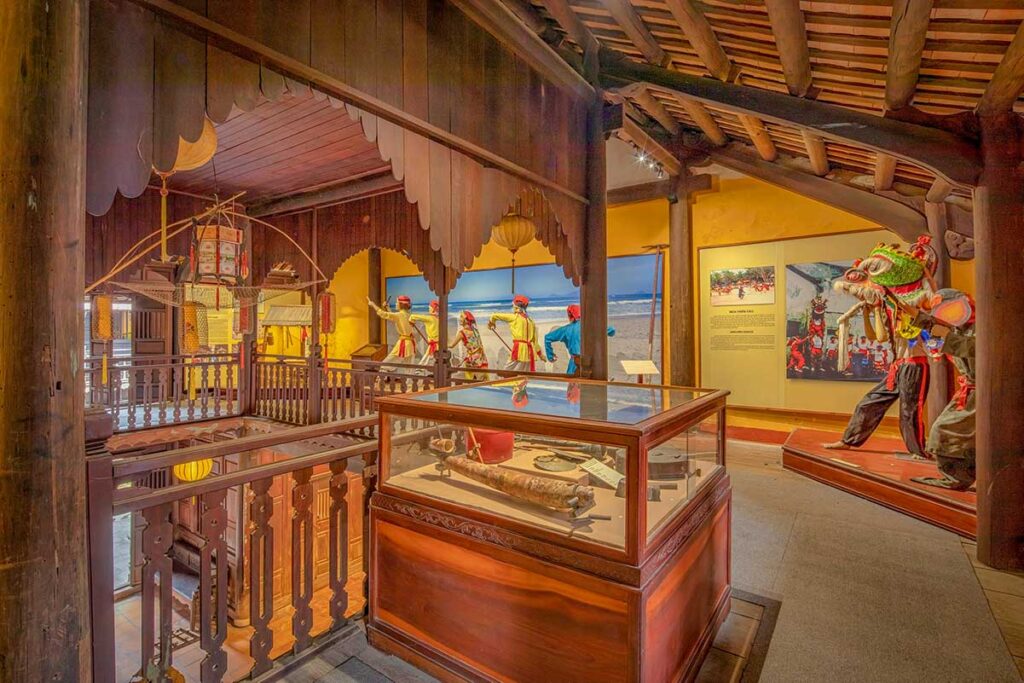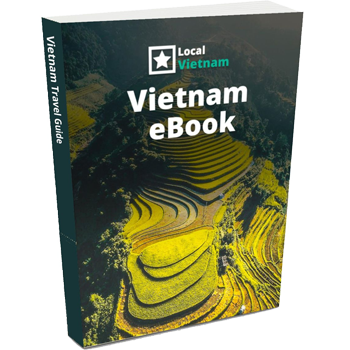What is the Museum of Folk Culture about?
The Museum of Folk Culture, or Hoi An Folklore museum, is located at 33 Nguyen Thai Hoc Street, with a second entrance facing the river on Bach Dang Street. It opened in 2005 and is housed in one of the largest traditional merchant houses in Hoi An’s Ancient Town—spanning over 50 meters in length and featuring two floors, wooden interiors, and a central courtyard.
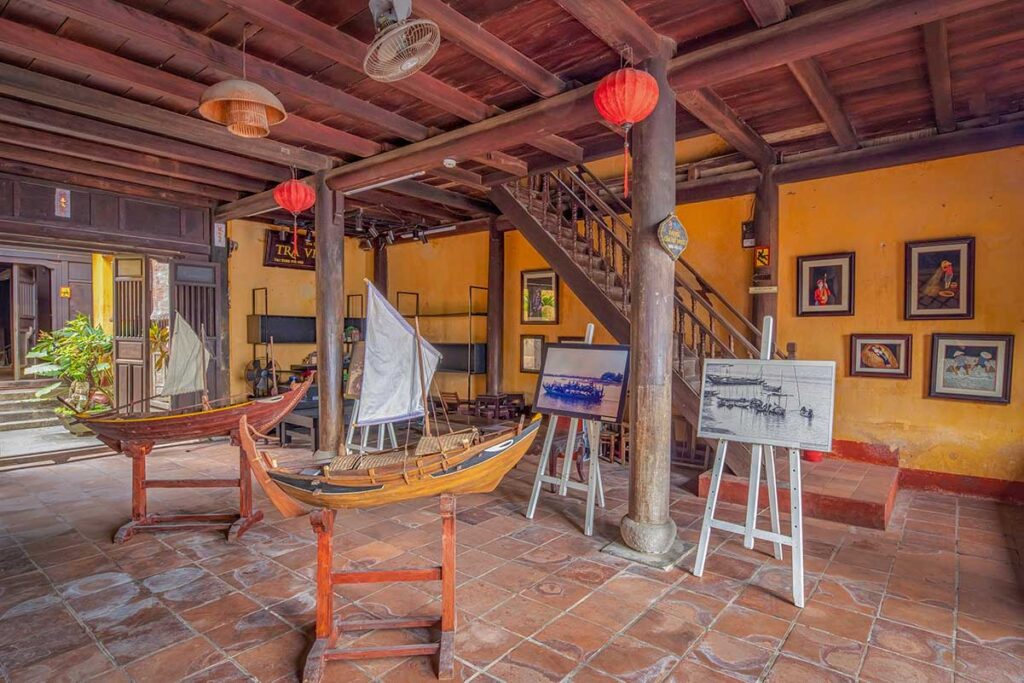
The museum is part of the Hoi An Ancient Town ticket system, meaning you’ll need to use 1 of your 5 entries to visit. Inside, it showcases both tangible and intangible aspects of local heritage—from traditional crafts and tools to music, dance, clothing, and daily life. It aims to preserve and present the folk culture that defined Hoi An’s identity across centuries.
Historical background & Museum setting
The Museum of Folk Culture is housed in one of the largest surviving merchant homes in Hoi An’s Ancient Town. The building stretches over 50 meters in length, with two floors, a central courtyard, and extensive use of traditional woodwork throughout—including carved balustrades, wooden partitions, and open-beamed ceilings.
Homes of this scale and construction were once common during Hoi An’s peak as a thriving trading port in the 16th to 19th centuries, but few have survived in such good condition. Its layout and materials reflect both the Chinese architectural influence and the local craftsmanship that shaped the town’s unique style.
Beyond being a museum, the building itself offers a glimpse into the wealth and status of Hoi An’s merchant class during its golden age.
What to see – Museum layout & highlights
The Museum of Folk Culture is spread across two floors, offering a mix of life-size displays, themed exhibits, and hands-on experiences. It gives a well-rounded look at both the material culture and daily traditions of Hoi An’s people.
Ground floor
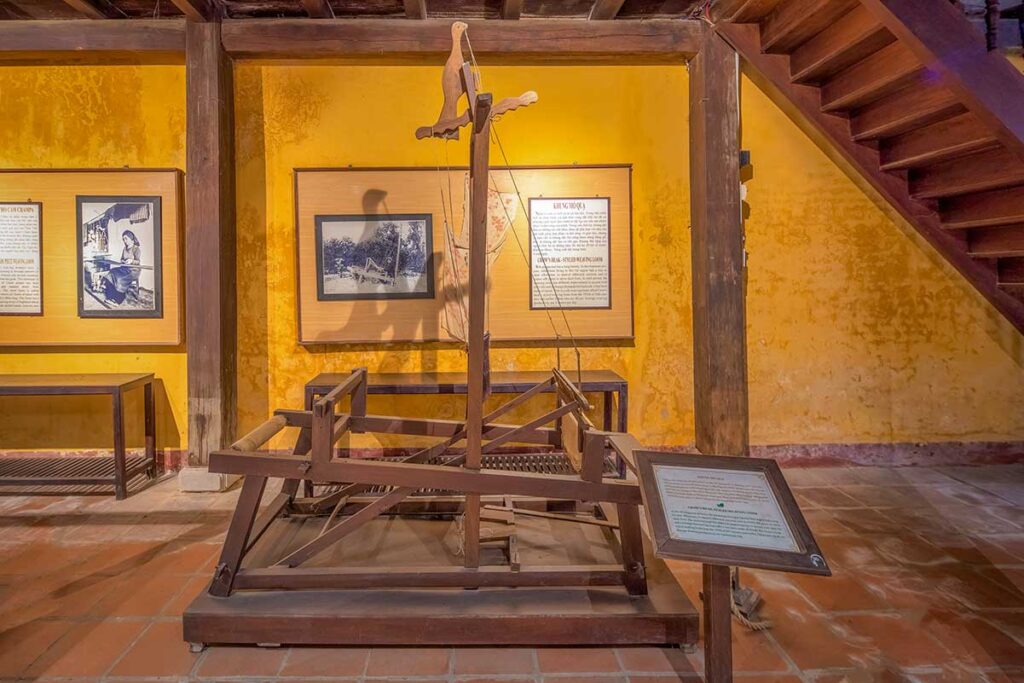
The ground floor features larger artifacts and occasional interactive experiences. You’ll see items like weaving looms, fishing gear, and agricultural tools, many of which were used in the surrounding villages.
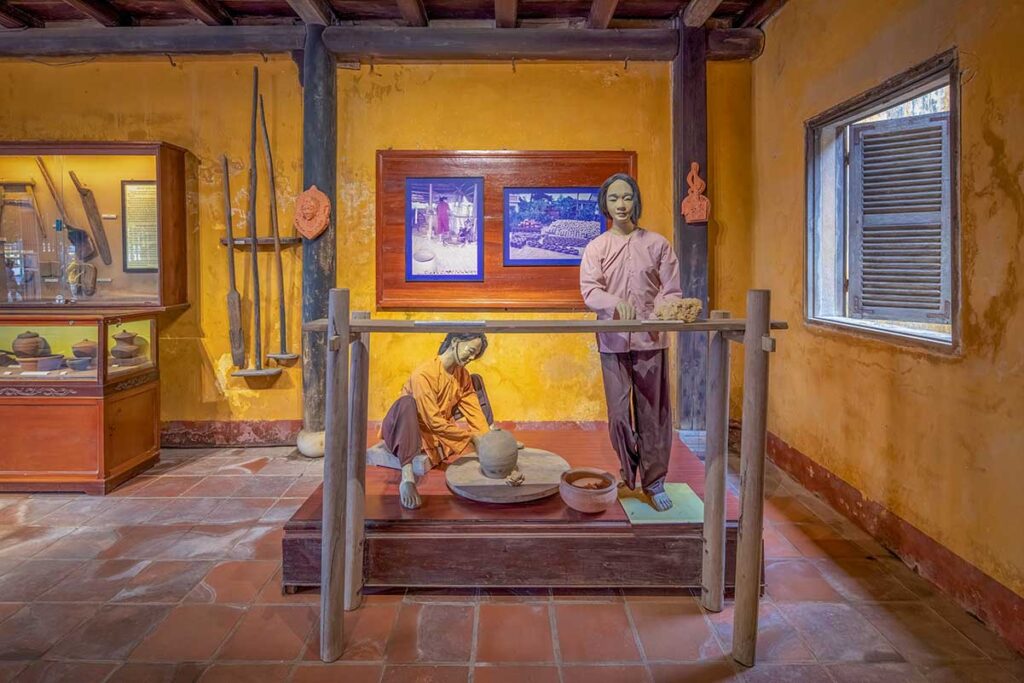
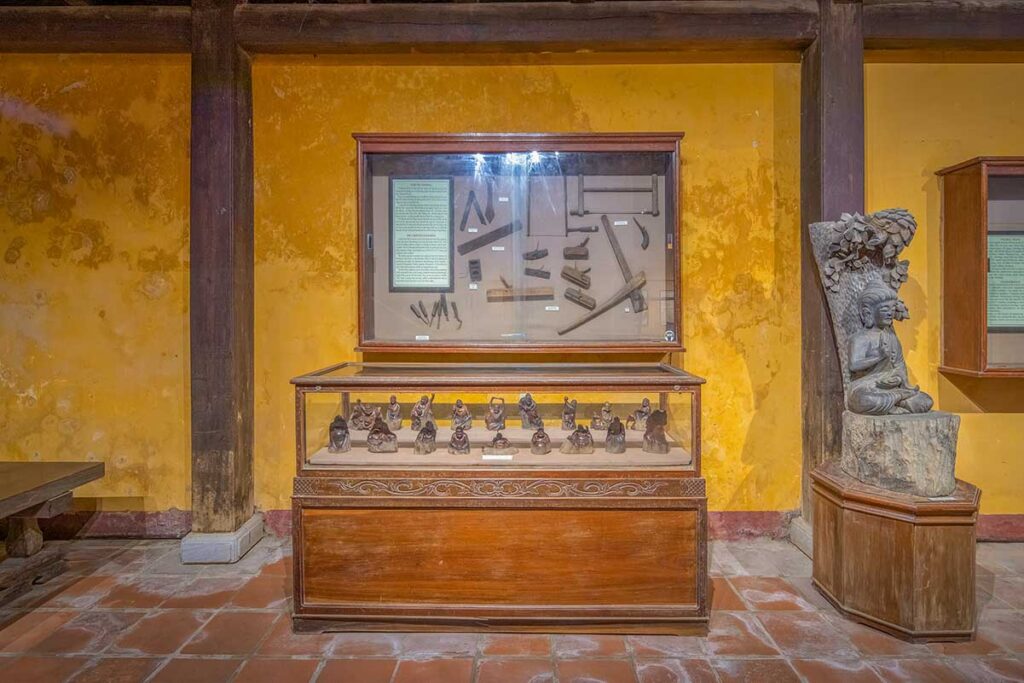
There’s also a small room where you can try calligraphy or observe a local artisan at work (depending on the time of day), and some visitors are offered a cup of local tea as part of the experience. Toward the back, you’ll find a modest silk and souvenir shop, where items are sold with little sales pressure—more of a quiet extension of the museum than a commercial setup.
Second floor

Upstairs, the museum is divided into four themed sections, each highlighting a different aspect of local folk culture:
- Folk Art
This section displays woodcarvings, bronze statues, terracotta figurines, and painted panels used for worship or decoration. Most pieces come from village temples or homes and reflect both artistic skill and spiritual tradition. - Folk Performing Arts
Here you’ll learn about local music and dance traditions like Bai Choi (a musical card game), Ba Dao singing (performed by fishermen), and the vibrant unicorn dance seen during festivals. Costumes, musical instruments, and descriptive panels help bring these traditions to life. - Traditional Villages
This area shows how different villages around Hoi An specialized in crafts and trades based on their environment—like fishing villages, pottery hamlets, and carpentry communities. Displays include tools, models, and photos from villages such as Kim Bong, Thanh Ha, and traditional tailoring workshops. - Traditional Lifestyle
Focused on everyday life, this section includes items like cooking tools, clothing, silk samples, embroidery, and even materials used in traditional medicine. It paints a picture of how people lived, worked, and maintained local customs through generations.
Architectural features of the building

Beyond the exhibits, the building itself is one of the museum’s highlights. It’s a well-preserved 19th-century wooden house, typical of the grand merchant homes from Hoi An’s trading era. The structure spans the length of a full city block, connecting Nguyen Thai Hoc Street with Bach Dang Street along the river—something very few buildings in town still do.
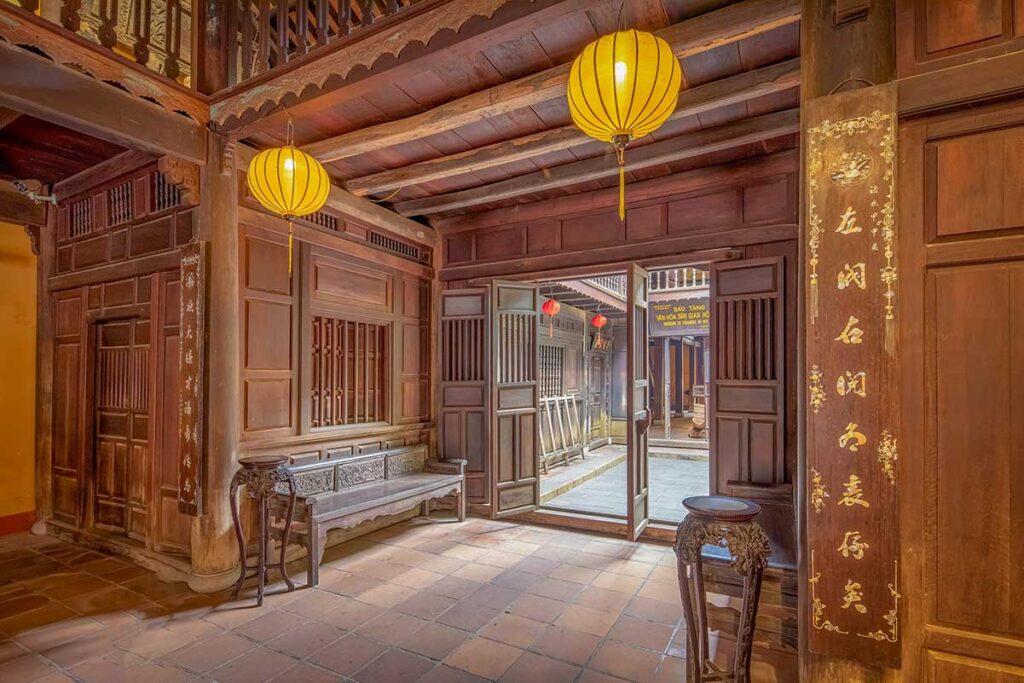
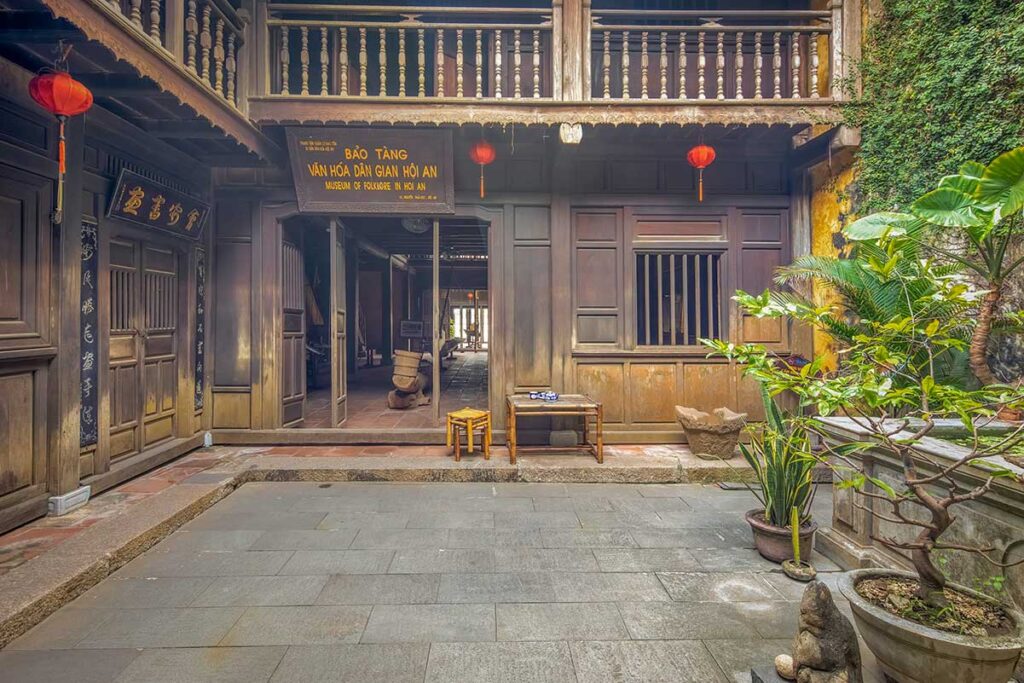
Inside, the house follows a classic layout with a central courtyard, which provides light and airflow throughout the two-story interior. The space features timber floors, wooden pillars and railings, and carved partitions, all showing the craftsmanship of the time.
Homes of this size and style are increasingly rare, making this building a valuable example of Hoi An’s architectural heritage as well as a fitting setting for a museum focused on folk life and tradition.
Visiting information
Location
The Museum of Folk Culture is also named Hoi An Folklore museum and located at 33 Nguyen Thai Hoc Street, with a second entrance on Bach Dang Street along the riverside. Its central position makes it easy to combine with other nearby museums and landmarks.
Getting there
The museum sits right in the heart of the Ancient Town, so it’s best reached on foot. If you’re staying nearby, it’s an easy walk. From further out, take a taxi or bicycle to the edge of the Old Town and continue by foot.
Opening hours
Open daily from 7:00 AM to 9:00 PM. Note that the museum is closed on the 20th of each month for maintenance.
Entry fee
The museum is included in the Hoi An Ancient Town ticket, which costs 120,000 VND and gives access to five sites of your choice. Visiting here uses one of your five entries.
Facilities
There are restrooms on-site and a small gift shop with local products like silk scarves. On some days, you may catch demonstrations or calligraphy classes on the ground floor. Be aware that the staircase to the second floor is steep, so take care when going up or down.
Is it worth visiting?
The Museum of Folk Culture is one of the more informative and varied museums in Hoi An. It offers a broad overview of the town’s traditional life, crafts, and cultural practices, making it a great introduction for first-time visitors.
That said, the layout can feel a bit scattered and some displays are in need of updating. But if you’re curious about local customs, craft villages, and performing arts, it’s a solid use of one of your Ancient Town ticket entries—especially if you’re looking for something beyond temples and assembly halls.
Compare with other ticketed museums
If you’re choosing how to use your five Ancient Town ticket entries, it helps to compare the Museum of Folk Culture with other museum options:
- Museum of Trade Ceramics
Focused collection inside a historic merchant house, covering Hoi An’s role in international ceramic trade. Best for those interested in artifacts and architectural heritage. - Museum of Sa Huynh Culture
Displays burial jars and relics from Vietnam’s ancient Sa Huynh civilization. Great if you’re curious about archaeology and early history. - Museum of Traditional Medicine
A small, niche museum inside a wooden house, focusing on Vietnamese and Chinese herbal healing practices. Worth visiting if you’re interested in traditional medicine. - Museum of History and Culture
Offers a general timeline of Hoi An’s development. Somewhat dated displays, but useful if you want historical context in one place.
Among these, the Museum of Folk Culture stands out for its variety and size. It’s a good all-round choice—especially if you want to learn about craft villages, folk traditions, and daily life in Hoi An.
